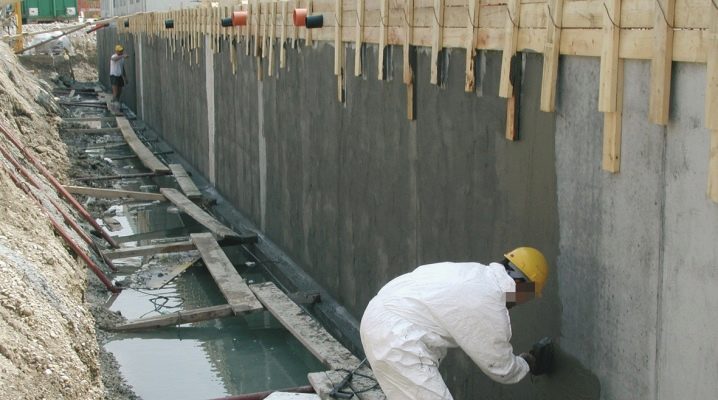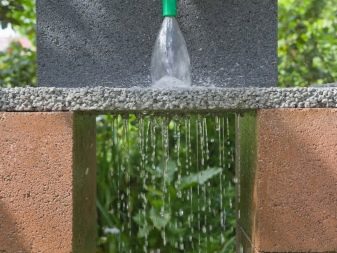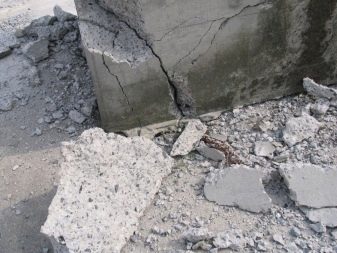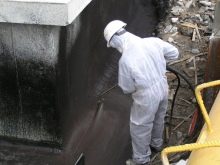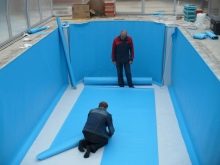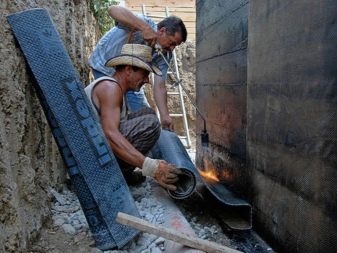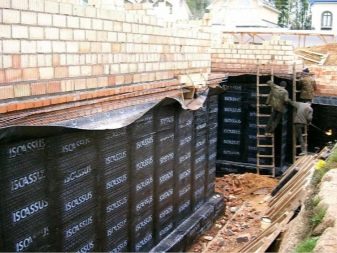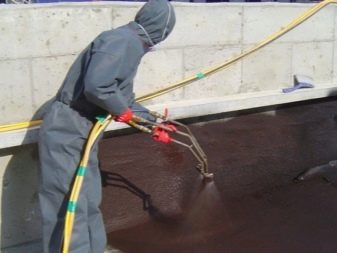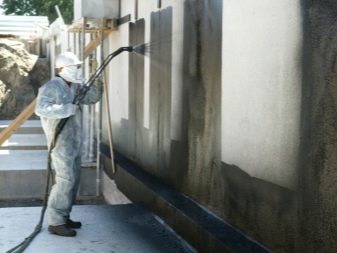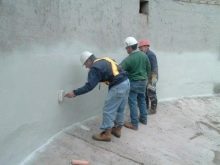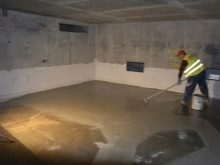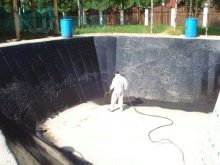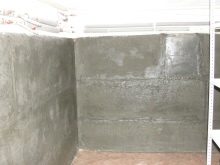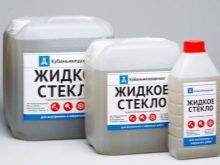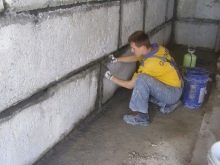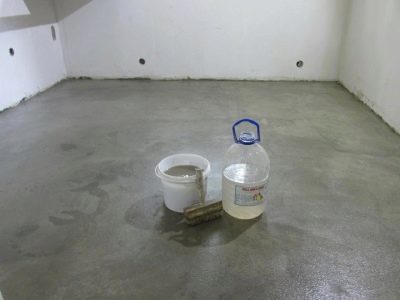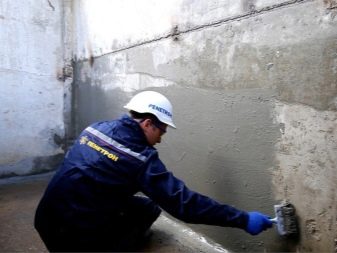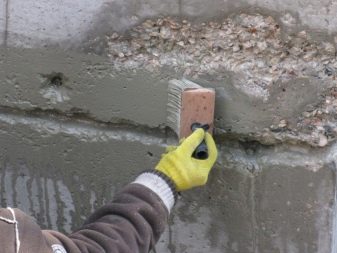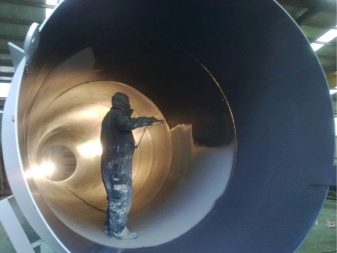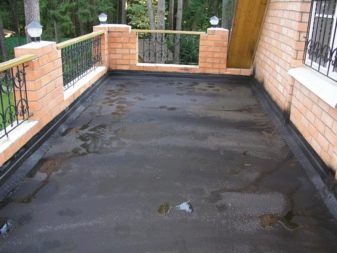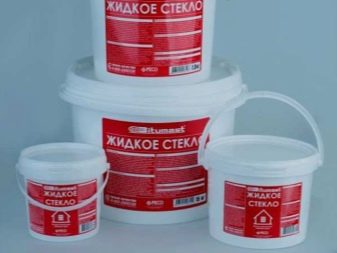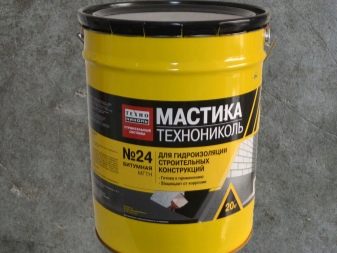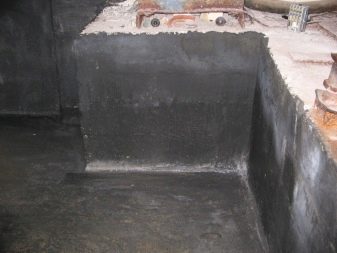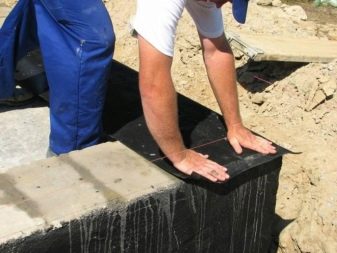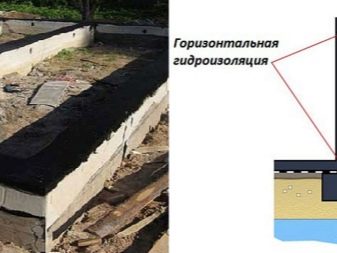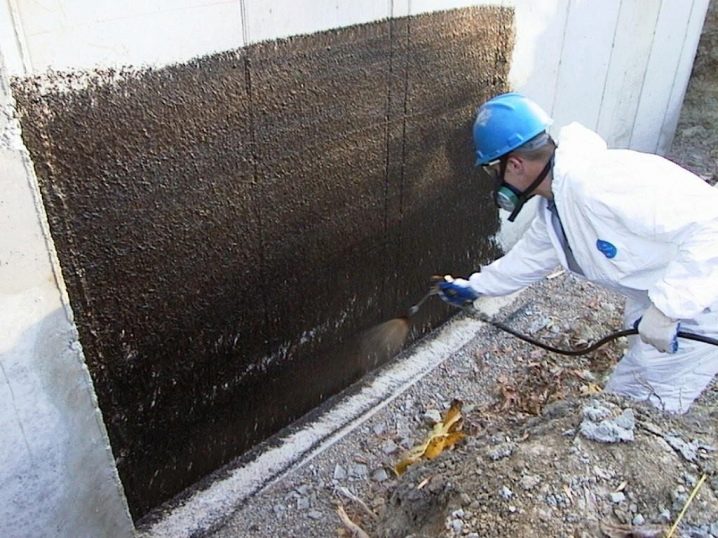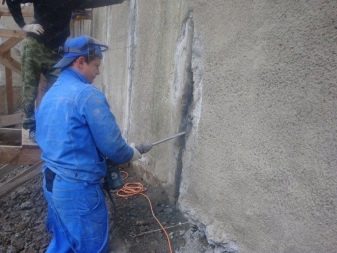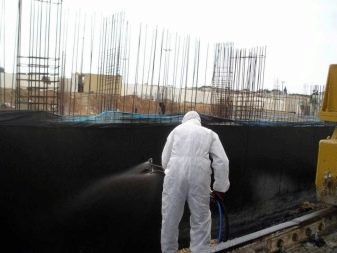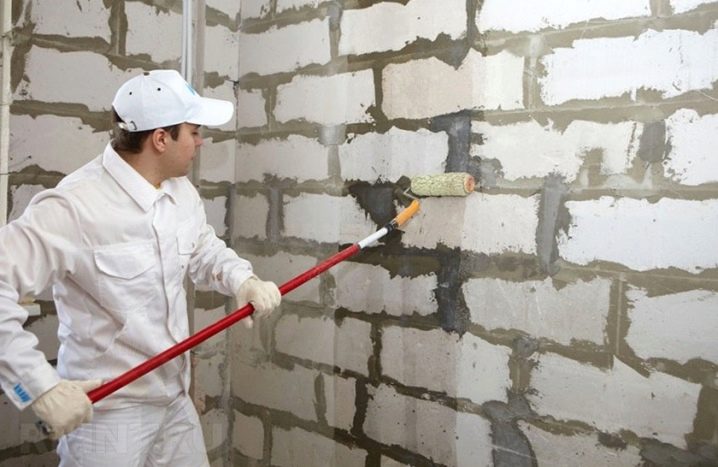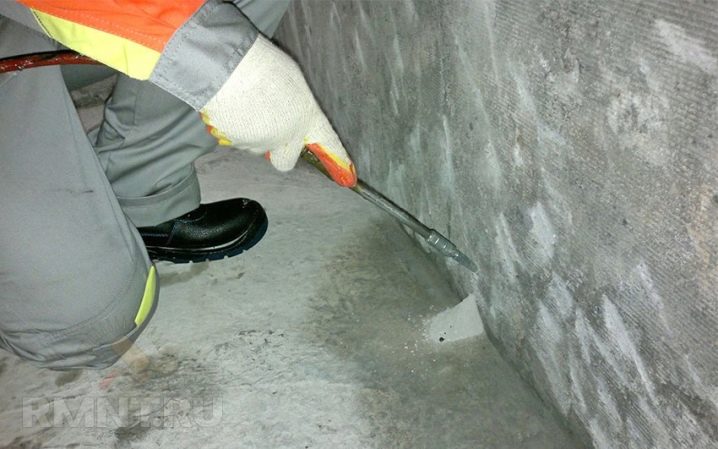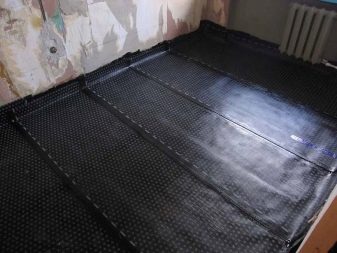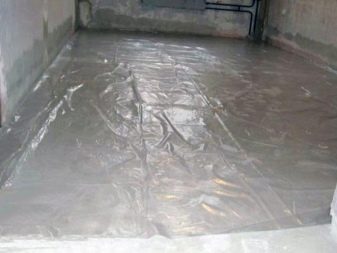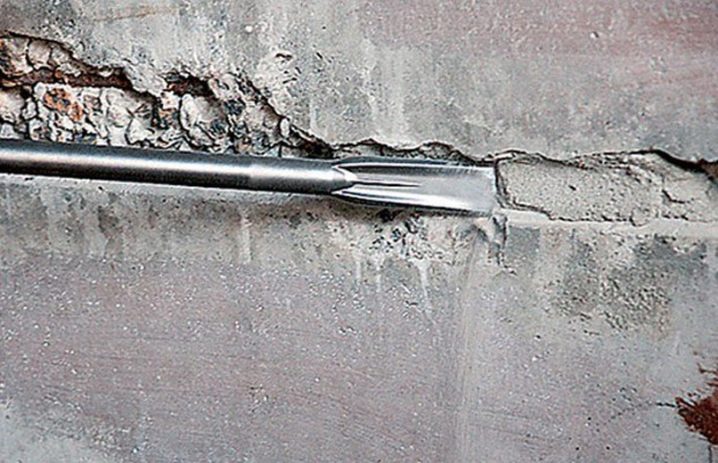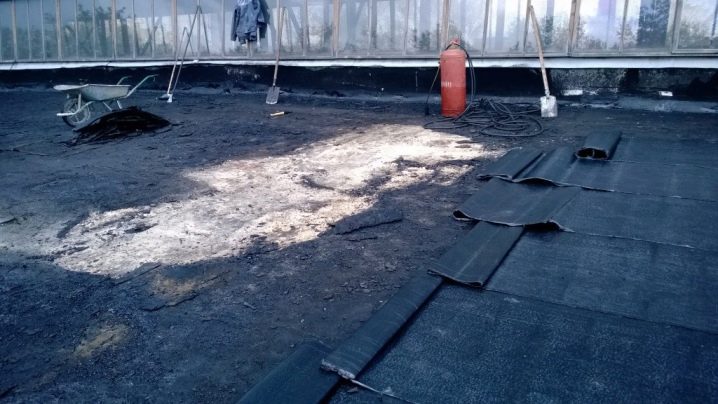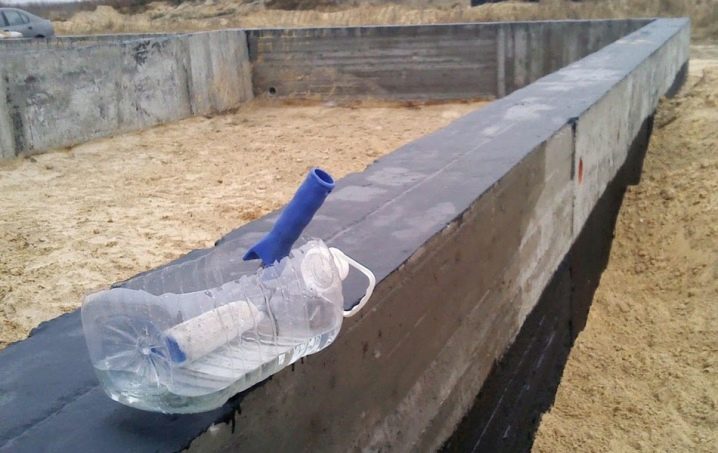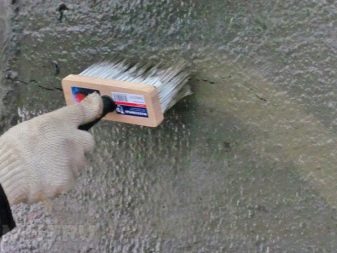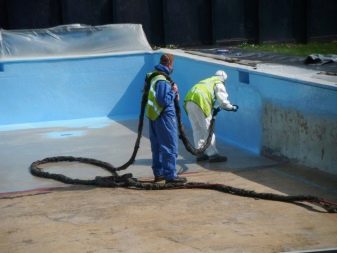The principle of waterproofing concrete
Concrete structures are considered to be the benchmark for strength. This influenced not only the priorities of the builders in many cases, but even the mass culture. The problem is that no mechanical strength allows buildings made of artificial stone and their individual parts to resist the destructive action of water.
Special features
Concrete waterproofing is often carried out during repair, construction and renovation works. The goal is to improve the quality parameters of the building and increase its resistance to water of various origins.
Along with rolled materials, penetrating waterproofing is widely used. It does not stop the liquid on the way, but makes the thickness of the material impermeable to it.The advantage of this option is to protect the entire surface at once, the ability to guarantee cover even with the continuous action of water (in the pool, reservoir).
Rolled material is not suitable for the protection of constantly wet surfaces. But it also has advantages in comparison with penetrating solutions, such as:
- the ability to protect those walls and parts that already have cracks or may have them in the future;
- covering of brick parts not only in the surface layer;
- protection of porous concrete;
- suitability for finishing the foundation.
The penetrating material is mixed with water and covered with wet surfaces. Waterproofing is ensured by the systematic penetration of the solution into the pores. Crystallization forms a continuous cover band, which guarantees the stability of the building to water. The penetration depth of waterproofing under favorable conditions can reach 0.3–0.4 m. If initially there are microscopic pores and capillaries, as well as microcracks saturated with crystals, the treatment reduces water penetration several times.
Kinds
Obmazochnaya waterproofing is now being used more actively and successfully replacing older solutions based on bitumen.Its advantage is that the formed coating initially has a high adhesion to concrete surfaces and in fact becomes a whole with them.
The most advanced variations of the coating provide water resistance to the clamp and tear - they are suitable for protecting the walls of pools and tanks. Other positives are the following:
- possibility of use in the underground and basement;
- resistance to the occurrence of cracks under dynamic load;
- steam escaping;
- ease of installation;
- possibility of use on wet concrete.
Cement coating is divided into plastering and penetrating. Its average consumption is 3500 g per 1 sq. Km. m at a layer of 0.2 cm. Such coatings can be used to protect both vertical and horizontal structures. But mineral mixtures often lack elasticity and ability to withstand the effects of vibration.
The addition of liquid glass is used for waterproofing concrete no less than cement compositions.
Such processing allows you to form a monolithic contour without a single seam, confidently opposing not only fluid, but also mold.and other fungi. The glass version is suitable for geometrically complex architectural details and hard-to-reach areas. A small, lightweight layer effectively replaces several heavyweight windings at once. There is no slightest risk of ignition, poisoning. The coating will not collapse even at high temperatures.
Protection from glass is so effective that it is used in tropical and arctic conditions, and for large pools.
But there are still weaknesses. Thus, the film formed by liquid glass is fragile and must be covered on the outside with other materials. It is necessary to work with the mixture quickly so that it does not freeze prematurely. Therefore, along with liquid glass, other deep penetration waterproofing compounds are often used.
They work for the most part on such three principles as:
- osmosis (diffusion method of molecules);
- Brownian motion;
- surface tension of liquids entering the capillaries of concrete.
The desired effect is also achieved through various chemical reactions occurring in the thickness of the stone. But all this is of interest mainly to specialists, and for ordinary builders and homeowners it is important that the concrete soaked in special mixtures remains permeable to steam.Practice shows that penetrating waterproofing is acceptable for prefabricated and monolithic structures equally. The crack resistance is also of no particular importance, as long as the material grade is not lower than M100.
Experience has shown that penetrating treatment is effective for the following:
- hydrotechnical and port complexes;
- foundations, cellars and basements;
- fire tanks;
- elevator shafts, balconies, parking complexes;
- air transitions between buildings;
- tunnels and bunkers.
Penetrating insulation is made of dry mixtures, on the basis of which a one-component cementitious mortar is kneaded, or with the help of ready-made liquid reagents.
Strictly speaking, liquid glass and liquid rubber fall into this category. Dry waterproofing attracts the attention of builders because it does not require sophisticated equipment or sophisticated work skills. The only exceptions to this rule are roll coverages. Concrete dry mix easily sticks to any surface, but after drying it can become covered with cracks.
The mortar variant is formed from fractions less than 0.5 cm. The chemical base is quartz sand and some other mineral substances with additions of polymers. In addition to protection against water, such compositions help to make walls stronger.Again, the steam mode is not disturbed. With the help of mortar waterproofing, you can warm the foundations to the depth of soil freezing.
The impregnating waterproofing system is attractive in that it can be used selectively on those structural elements that are experiencing a particularly powerful load. It is allowed to use it both on completely new and already used objects. Most often, bitumen or synthesized resins are used for impregnation.
Attention: despite the relative simplicity of the method, the best results are achieved when using finished products manufactured at the factory. With all the desire to provide comparable performance, using sealant directly on construction sites, it does not work.
Scope of application
Waterproofing of the surfaces of concrete floors is required for items such as:
- the gaps separating the tape basis from the pillar foundation;
- the bearing parts of the base;
- ceiling tiles.
Apply waterproofing or bottom, or on external walls. In most cases, choose a mixture of deep penetration.Their goal is not limited to blocking the capillary movements of water, it is also important to strengthen technological joints. In some situations, used polymer plaster compositions. Sometimes it is technologically justified to combine the processing with mastic and the laying of rolls poured on the surface and penetrating into the thickness of the material.
Important: penetrating waterproofing requires great care.
Any manipulation with it is permissible only when wearing personal protective equipment, namely:
- impermeable glasses;
- respirators;
- rubber gloves.
The presence of dust particles and efflorescence on the surface is unacceptable. Loose concrete relies churn. All joints and cracked spots are covered with gates, so that the penetration in these areas is even deeper than in the whole wall.
The penetrating mixture is applied in two steps, and the second treatment is carried out when the initial portion grapples a little, but still does not have time to dry. Further, for 72 hours, the finished surface will have to be continuously moistened. Not allowed the slightest mechanical effects on it or lowering the temperature to negative values.
The water protection of aerated concrete blocks and structures for outdoorworks. Aerated concrete absorbs moisture extremely intensively, much more than basic building materials. On the walls, the required degree of insulation is provided by plaster from 0.8 cm thick. As in the preparation of other surfaces, it is very important to remove all dirt and foreign deposits. The most thoroughly cleaned profile dowels.
Aerated concrete before hydrophobic treatment must be primed.
The choice of composition for this purpose is determined mainly by the possible costs and the climate of a particular area. The primer is always applied at a minimum of +2 degrees. A prerequisite for success is the protection of cold joints concreting. It is these areas like in aerated concrete, and in other varieties of artificial stone, are the weakest links.
The choice of seam waterproofing method is determined by the following features:
- category of underlying soil;
- the magnitude of temperature differences (seasonal and daily);
- chemical aggressiveness of water;
- load value;
- option mobility of the seam;
- the quality of the applied materials and so on.
You can use the hole acrylate composition, hydroshapuk, acrylic-based gel and other injectable mixtures. Many experts prefer to use several options at once, but each combination should be selected individually for all houses. After all, any way to isolate the seam from water has both positive and negative sides. So, the keys poorly tolerate high hydrostatic pressure, non-shrinkable mixtures can be protected only stationary seams.
If it is necessary to correct problems that have arisen during the construction of houses from aerated concrete, foam concrete, or to carry out repairs without dismantling, injection techniques are recommended.
A special technique is needed for waterproofing joints of floor tiles under the laminate. Typical solutions are the following:
- pouring liquid materials;
- forming a screed from waterproof concrete;
- rolls layout;
- placement of polyethylene (from 50 microns only as an addition to other protection options).
Concrete foundations are predominantly made of izolon, polyethylene foam, cork (autonomously and in combination with bitumen) or EPPS.
Initially, all joints, intersections with walls and plate boundaries are cleaned.It is categorically unacceptable to leave the weakened plaster or the slightest sediment deposits. Waterproofing is preceded by the application of deeply penetrating primer. The overlap of the roller blocks is exactly 100 mm. For leveling bitumen, polymers or asphalt used spatulas with a wide blade. The foray of polyethylene films on each other is 150 mm, without a polyethylene addition, no protection can be considered complete.
All screeds on the street are subject to mandatory waterproofing, because they are open to the weather elements. In those places where the groundwater level is very high, they must be taken away, and the screed itself should be made as powerful as possible. Under the waterproofing layer is usually placed rammed clay. Bituminous materials are placed in three layers, when using polymer coatings can be limited to one line.
Recommended materials are as follows:
- isol;
- Brizol;
- PVC film;
- polyisobutylene;
- waterproofing;
- double polyethylene.
How to use?
Each of the methods of waterproofing concrete has its own specific application procedure, its proportions.
- Liquid glass must necessarily be covered outside with paint, so it will last much longer.
- The potassium variant is intended for areas where high tackiness is particularly important; This type of glass is used in the protection of foundations from water.
- Sodium additive increases the resistance of the insulating layer to acids and reduces the gloss. Before being applied to the surface, the glass is diluted with water in a 1: 2 ratio, which makes it possible to use only 0.3 kg of reagent per 1 square meter. m
The surface is supposed to degrease and make as smooth as possible. It is possible to saturate concrete up to 3 mm in depth using a spray gun or a brush. Deep impregnation (from 2 cm) is made at least in three layers. Waterproofing the floor and concrete screeds involves adding 1 liter of glass to 10 liters of mortar. The same mixture is useful for the protection of wells, bathrooms, pools, basements.
Restriction: liquid glass should not be added to the solution for the facade of the building, which is planned to be painted. Adhesion will be too weak and will have to spend a lot of effort. Between the application of the layers of a product, you need to pause for 30 minutes.It is better to work more carefully and not leave any passes right away than to redo everything from scratch. Liquid glass before each use in the repair you need to check whether there are any pollution, clods or foreign matter.
Tips and tricks
Hot waterproofing on the basis of asphalt is applied after melting necessarily at temperatures from +150 to +190 degrees. It is placed on the side of the pressure or constant moisture. Protective barriers for such waterproofing are equipped only occasionally. It is unacceptable to use hot asphalt, if the surface is heated to more than +50 degrees or will be in contact with petroleum products.
You can protect the concrete and a layer of metal - from sheets of 0.4 cm thick; but the high cost and complexity makes this method uncomfortable in small construction.
A little more about the waterproofing of concrete, see the video below.
